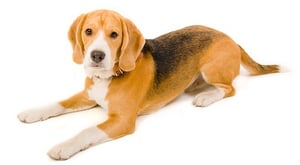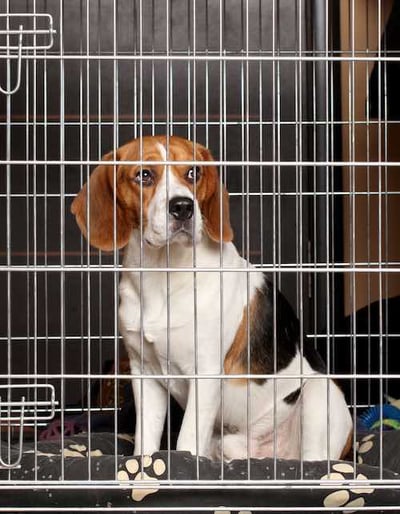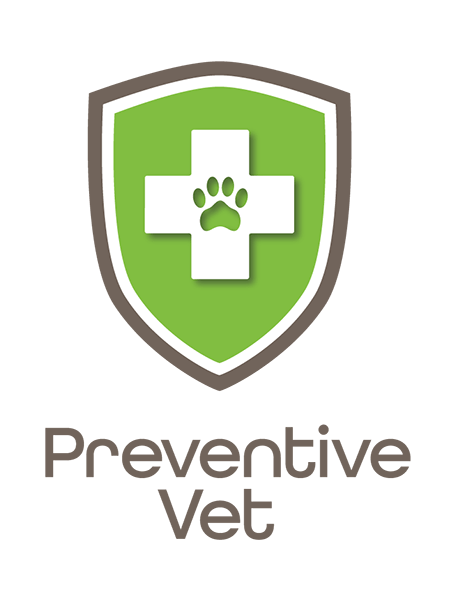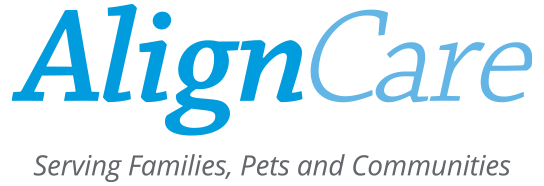- en
You might be scared because your dog is acting as if their neck or back is painful, and in addition to this, their legs seem weak. Your dog may have Intervertebral Disc Disease (IVDD).
This InfoRx will help you understand what this disease is, its cause, as well as what you can do for your dog.
Quick Links

A dog's spine is made up of blocks of bone called vertebrae that are separated by discs. The spine is divided into five sections of vertebrae – 7 cervical (neck), 13 thoracic (chest), 7 lumbar (back), 3 fused sacral (tail bone at the base of the tail), and a fluctuating number of tail vertebrae. Humans have 7 cervical, 12 thoracic, 5 lumbar, 5 sacral, and 4 caudal vertebrae. Since human and canine spines are so similar, they both can suffer from similar diseases.
Our mission is to help save dogs' and cats’ lives through our educational content. To support our efforts, this page may contain affiliate links. We earn a commission for qualifying purchases – at no cost to you.
In order to understand what Intervertebral Disc Disease (IVDD) is, it's easiest if we understand the anatomy or parts involved. The spine, with regards to IVDD, can be divided into two main regions – the neck region and the thoracolumbar region (area near the ribs and lower back). The individual spinal vertebrae are separated by intervertebral discs. The discs have a fibrous ring surrounding a jelly-like center. The intervertebral discs provide a cushion, to ease the impact of running or jumping, between the spinal vertebrae. They are what allow the spine to be flexible and have movement.
Intervertebral Disc Disease is a degenerative condition where the disc bulges or ruptures in a dog’s neck or thoracolumbar region of the spine. When the disc ruptures or bulges it causes compression and/or damage to the spinal cord and nerves.
The location and the level of severity of the bulge or rupture determine the signs you will see with your dog. Some dogs can initially suffer from just neck or back pain. If the disc issue is in the neck region, dogs can be unsteady in all four limbs or be completely unable to move. If, however, the disc issue is in the thoracolumbar region (mid-back), only the hind limbs are affected. As the disc presses on the nerves of the spinal cord, the effects are pain, possible nerve damage, and even paralysis.
About 85% of IVDD occurs in the thoracolumbar region (mid-back) of the spine
While this is typically an age-related disease, predisposed breeds can be affected as young adult dogs. For Hansen Type I disease, the average is 3 to 6 years, and for Hansen Type II the average age is 8 to 10 years.
The fibrous ring of the disc hardens which allows the disc to be damaged and breakdown more easily. This allows the gelatinous center to explode through the fibrous ring. Hansen Type I disease typically affects long-backed short-legged dogs.
With Hansen Type II disc disease, the entire disc, gradually over an extended period of time, essential hardens and then bulges causing compression of the spinal cord. Hansen Type II disease is more common in older large breed dogs.
The cause of IVDD is impacted by the type of disc disease (Hansen Type I or II; described in the section above).
Typically, small breed dogs have Hansen Type I and usually suffer immediate signs. There may or may not be any history of trauma. But normally ANY forceful impact can cause damage and breakdown of the disc. Such actions as jumping and landing, twisting wrong or suddenly, or falling can cause one or more discs to rupture.
With Hansen Type II disease, the onset of symptoms is subtle, often going undetected, so the cause can be harder to determine. But it can be the result of trauma, the progression of arthritis in the spine, or some form of impact like jumping or leaping.
Both types of disc disease are impacted by obesity since it puts added strain on the spine.
If your dog exhibits any neck or back pain and /or neurological abnormalities such a weakness, inability to walk, etc., it is critical to contact a veterinarian immediately. Any delay in treatment can lead to a less favorable outcome.
It is essential that you are as detailed as possible when reporting your dog's symptoms. This allows the veterinarian, in addition to their physical examination findings, to determine more accurately the location of the problem.
Treatment, non-surgical or surgical, and the potential outcome will be based on several factors. These are the following things your veterinarian will evaluate when determining your dog’s treatment decision:
Caring for a dog with IVDD, regardless of the treatment option, can be time-consuming and costly.

While surgery is not always required, surgery is often considered the best option for decreasing pain, restoring mobility, and potentially preventing future disc issues. Surgery can range from $3,000 to $8,000. The majority of the time, surgery is successful. Read more here for tips on making your dog heal and feel comfortable after surgery.
Conservative, non-surgical treatment is typically used in mild cases. If, however, your dog doesn’t respond or symptoms progress, surgery may become necessary.
The purpose of conservative treatment is to relieve pain, improve mobility, and allow the spinal cord to heal. This type of treatment can include the following:
Check out the "Prevention" section at the bottom of this page for tips on how to help your dog feel more comfortable and prevent this issue from happening again.
The rate of improvement is dependent on the type of treatment your dog receives and the severity of trauma to their spinal cord.
If your dog had surgery, recovery is at least 6 to 8 weeks. The spinal cord is very slow at recovering. But typically, symptoms should not worsen, and gradually over time, you should see some positive changes.
You should typically see improvement within a couple of weeks in mild cases, but don't stop strict confinement and continue preventing them from exercising for a full 4 to 6 weeks.

Regardless of the treatment, surgical or non-surgical, if your dog’s symptoms progress or worsen in any manner, contact a veterinarian immediately. For example, if your dog just had back pain but now is having trouble walking or if your dog was able to urinate on their own but suddenly can’t – call a veterinarian.

All dogs that have a history of disc disease should have restricted or controlled activity levels. This means no leaping, jumping, running, etc. But activities such as walking and swimming are ideal. Working with a rehabilitation practitioner can help you know the best ways to strengthen and exercise your dog.
If your dog is overweight or obese, speak with your veterinarian about a weight loss plan.
Walk your dog with a harness/leash instead of a collar/leash, especially if their disc issue was in their neck.
Elevate food and water bowls so that your dog does not have to lower their head and neck to eat or drink.
Use ramps for your dog to get in and out of the house as well as the car. Also, use ramps for pets to get on furniture and beds. Additionally, depending on your dog’s mobility, a sling or harness may be needed to help assist your dog with walking.
Non-slip mats or booties may be needed for some dogs so there is no risk of them slipping or sliding on different surfaces.
Starting your dog on an arthritis supplement is beneficial for helping slow the progression of degeneration as well as potentially helping with pain. Fish oil supplements are beneficial in helping manage inflammation.
The Pet InfoRx® is made possible, in part, through our partnership with AlignCare®.


© Preventive Vet. All rights reserved. PreventiveVet.com
